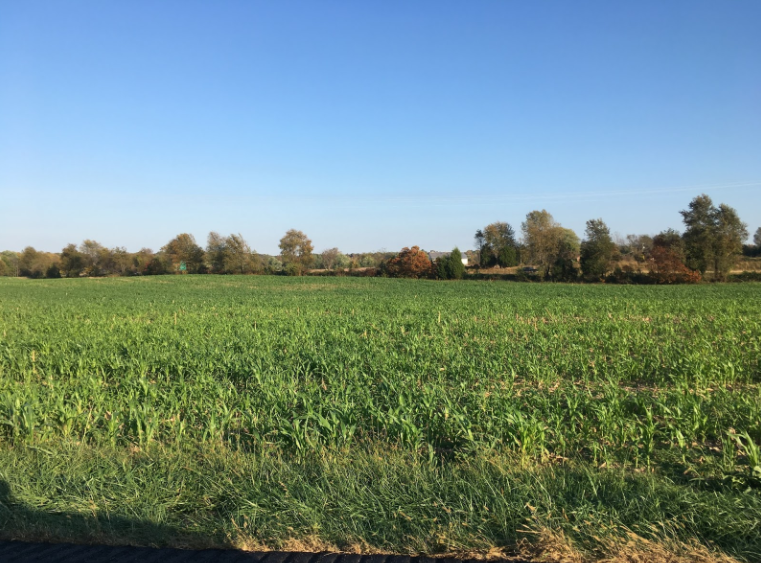By Chad Lee, Extension Agronomist
Drive just about anywhere in the state and you can find old corn fields that have a tremendous amount of young corn plants in them. The amount of plants in fields and the number of fields with volunteer corn plants seems much higher than normal. The extent of ground cover by the young plants makes the fields look as if someone intentionally planted them to corn this fall. There may be a few reasons for this.
Small Seed Size
A lot of corn plants ran out of water late in the season. That lack of water, combined with an attack by several fungi on the leaves, resulted in plants that had to pull nutrients from the stalks only. For plants that ran short on water and nutrients, the seed size was small. For combines that were not adjusted properly, the small seeds could have been blown out the back. Anecdotally, one grain buyer commented that test weights were up in the loads he received this year. His observation would support this idea that the small seeds were simply blown out the back of the combine.
Weak Stalks
We just explained why stalks were weak this season in the previous paragraph. Those weak stalks caused more lodging and more ears on the soil surface before the combine ever ran through the field.
Seed Shattering
The weakened plants and small seeds also made seed on ears more likely to shatter when they hit the header of the combine. Some of the shattered seed never went through the combine.
In most fields, the amount of young corn plants look worse than the actual losses. A bushel of small corn seeds will contain about 100,000 kernels. A field with 2 or 3 bushels lost could have almost 300,000 plants germinate per acre. This is 10 times the normal seeding rate for many of our cornfields.
All of the corn germinated this fall will be killed by freezing temperatures. So at least the current young plants will not be around in the spring to haunt us further. The only question is whether or not all the seed that fell to the soil this fall germinated this fall. We will find out that answer next spring.
Even though the yield losses may look worse than they are, this season is a really good reminder that we need to be diligent at adjusting combines for each season. In a year when yields were lower and prices were a lot lower, it hurts even worse to see corn escape the combine.






